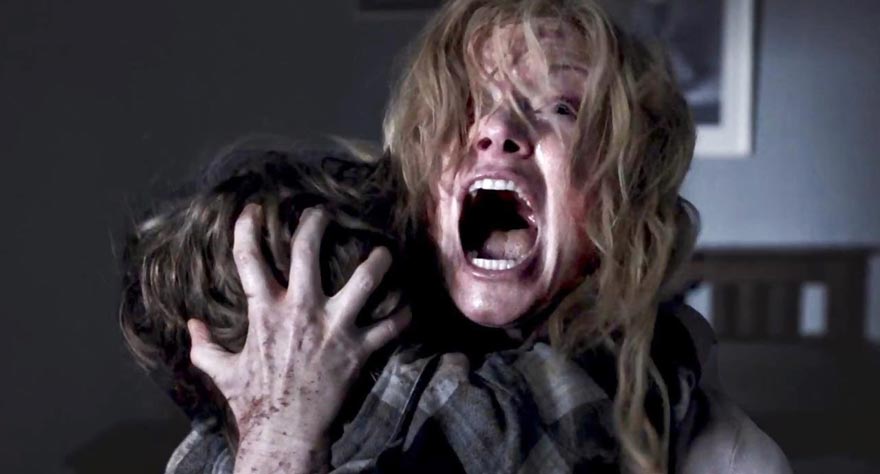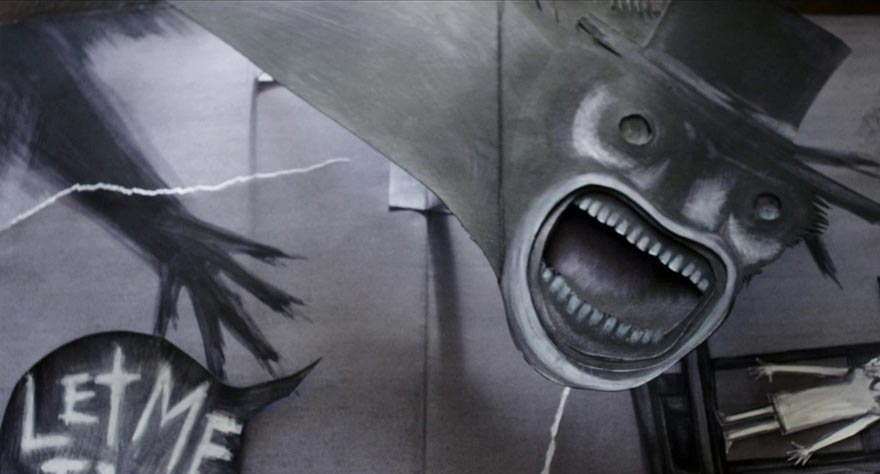
A modern horror of a single mother preyed upon by a children's book character.

A modern horror of a single mother preyed upon by a children's book character.
The feel of a horror film is almost more important than the content. And for all the grit and grime the Eli Roth’s of this world have pumped out, there is something truly refreshing in Jennifer Kent’s simplistic and intelligent new Australian horror film The Babadook. Even more refreshing is a distinct lack of gore, cheap frights or action-crazed plot. In an age where most horror films are phoned-in re-hashings of tales already told, The Babadook plays with a nostalgia all can relate to, the adolescent and irrational fear of an unknown evil determined to torment for the sake of tormenting, in an original and satisfying way.
In her directorial début, Kent, who also wrote the film, presents the touching tale of a single mother, Amelia (Essie Davis) at her wit’s end with her high-strung 6-year old Robbie (Daniel Henshall). Scraping by with her job at an elderly care home and being pulled out often to deal with complaints from her son’s school regarding his behavior, her situation is made that much more bleak by the fact that her son is a living reminder of her beloved husband’s untimely death as he was driving her to the hospital to give birth when he was killed. Robbie grates at his mother’s nerves with constant complaining of monsters and a tendency to build homemade weapons.
One night Robbie picks a new book from his bookshelf for his mother to read him before bed. As Amelia reads the darkly drawn story, a macabre and frightening figure presents itself in the pages: “Whether it’s in a word, or in a look, you can’t get rid of the Babadook.” Robbie rightly freaks out, and Amelia has to soothe him to get him to calm down. Amelia wonders at the book’s appearance, but when Robbie claims to start seeing the Babadook at home, in the car, and at school she starts to take the book more seriously, shredding it and throwing it into the trash. When it reappears later, she realizes something more sinister is at hand. She goes to the police, thinking perhaps a stalker is threatening her and Robbie, but the dark signs around her imply she and Robbie are on their own.

Kent’s story plays with traditional horror devices of mother-as-protective-hero (à la Poltergeist) and mother-as-threat (à la Carrie), teetering back and forth between both. In this way she challenges the notion that a mother is only as good or as bad as each extreme. Instead Amelia is a refreshingly modern mother. Stressed, under-sexed, lacking sleep and patience and generally trying to raise a child on her own in a world of snobby soccer moms and judgmental school system officials. Like all great horror films, the evil presented represents a part of our own psyches, the kind that feeds off our darkest thoughts, and in this case, Amelia’s own misplaced blame for her husband’s death. When Robbie pushes his cousin out of a treehouse for poking fun of his fatherless-ness or screeches from the backseat of his car for not getting his way, it’s hard not to want to strangle him a bit ourselves.
The Babadook itself is hardly seen—though the pages of the children’s book are plenty frightening in giving it form, thank you designer/illustrator Alexander Juhasz—but Kent affectively holds tension with excellent sound use and an overall dread that plagues every scene. Even the set design, with all the grey and dark blue walls of their home, plenty of dark corners, provides a cloud of gloom and doom mixed into every scene. One would think this small family could solve a few of their problems with a few coats of brightly colored paint. Instead Amelia begs a doctor for sleeping pills to force her son to sleep and give her the much-needed rest she desires. But in a state of exhaustion Amelia becomes even more vulnerable to the dark thoughts already residing in her, as the Babadook urges her to do what both ultimately want: to kill Robbie.
The Babadook holds more scares than any film all year, but more importantly maintains anxiety throughout its entirety (if you watch at home, we highly recommend lights off and sound way up). Kent taps into the horror genre’s ability to provide a platform for women to showcase their psychological versatility. It’s not simply woman as victim or monster. And the fear that keeps children from leaving their bed at night suspicious of what lies underneath, or the fear of what lurks in the dark of our closets at night, or the noises that always seem to come from right behind closed doors, these are the fears that power the Babadook, and indeed the dark side of our own imaginations. The film’s modern ending doesn’t try to neatly soothe our fears, but instead acts as a reminder that darkness never goes away, but can be kept at bay.
The Babadook is available on VOD or in limited theaters today.